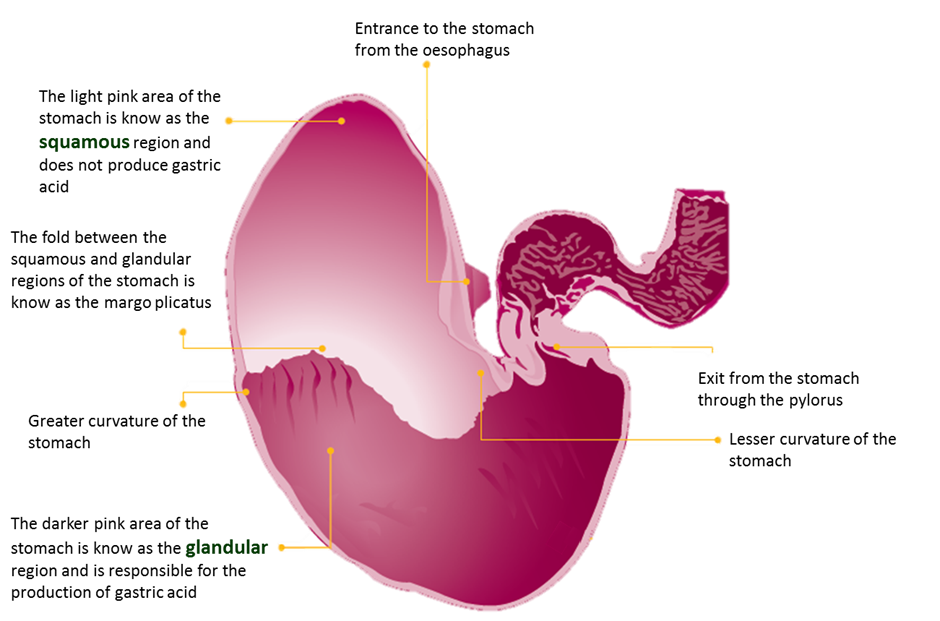Here at Kessock Equine Vets, we frequently perform Gastroscopy procedures on horses. Often these are performed due to suspicion on changed behaviours in horses or as part of poor performance investigations.
Signs your horse may have EGUS (Equine Gastric Ulcer Syndrome)
- Dull coat
- Change in behaviour such as napping and reacting negatively to being saddled, girthed or mounted.
- Mild colic signs
- Poor performance or reduced interest in ridden work
Risk Factors
- Horses under stress or in a new environment are more prone to developing ulcers
- As are those in high workload
A quick glance at anatomy
The horse’s stomach is divided into 2 main sections, the squamous mucosa (upper 2/3) and the glandular mucosa (lower 1/3) these are distinctly separated by the margo plicatus, see below.

There are 2 main types of ulcer: Glandular and Squamous. These are graded from 0-4 based on severity and presentation.

Why perform a gastroscopy, and what does this involve?
Using our 3 metre Digital Gastroscope we can obtain excellent quality images and videos of your horse’s gastrointestinal tract. From this imagery we can grade the ulcer based on location and severity, then treat appropriately.
We perform the procedure under standing sedation, passing the gastroscope via the nostril to the throat where it is then swallowed and passed down the oesophagus into the stomach. In most cases we can then reach the proximal duodenum (small intestine), where ulcers can also be found.
We ask that horses are starved prior to the procedure, as an emptier stomach allows better visuals of the mucosa and lets the scope pass through to the glandular part of the stomach without obstruction, please see here for more details on this.
Treatment
Treatment often involves making changes to management and administering medication. Commonly horses are prescribed a medication called Omeprazole, which is a proton pump inhibitor, and suppresses acid production in the stomach, allowing the ulcers to heal. Another common medication is Sucralfate which acts to line the stomach and protect the mucosa while the ulcers heal. Your vet may use either of these, a combination of both or other medications to treat the different types of ulcers. Each case is different.
It is normal procedure to then re-scope a horse after 4-6 weeks to check how the ulcers are healing/healed. And then we always taper off the medication doses, rather than suddenly stopping them.
Long term, horses benefit from management changes such as minimizing stress, feeding small amounts of food before ridden work and smaller more frequent feedings. We also have veterinary prescribed supplements, such as EquiGutPro available, which yield great results on reducing recurrence of EGUS.
If you suspect your horse may have gastric ulcers, or presents with any of the changes mentioned above, do not hesitate to call and chat to one of our vets who will be happy to discuss this with you.